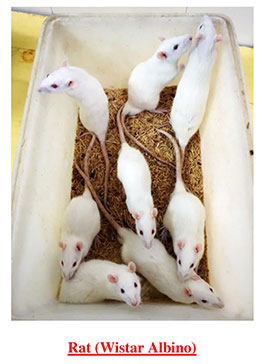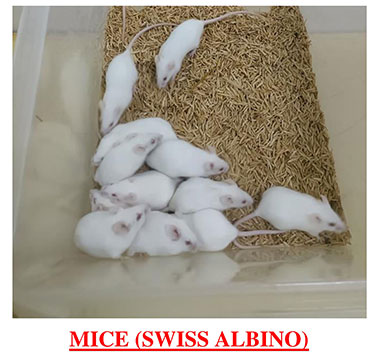Wistar Rat
- This strain was developed in 1906 at the Wistar Institute (USA).
- This rat is currently one of the most popular rats used for laboratory research.
- It is characterized by its wide head, long ears, and a tail length that is always less than its body length, It is an albino strain and easy-to-handle.
- Used in study of cardiovascular diseases, Degenerative diseases, ageing, Metabolic disorders, Oncology, Physiology etc.
Swiss Albino Mice
- They have red eyes, white fur and pinkish or white skin
- Used in study of degenerative diseases, ageing immunology, infectious diseases, metabolic disorders, neurosciences, oncology etc.
Syrian Hamster
- The Syrian hamster was recognized as a distinct species in 1839 by British zoologist George Robert Waterhouse, who named it Cricetus auratus or the "golden hamster".
- They have expandable cheek pouches, which extend from its cheeks to its shoulders.
- Golden hamsters are used to model human medical conditions including various cancers, metabolic diseases, non-cancer respiratory diseases, cardiovascular diseases, infectious diseases, and general health concerns
New Zealand White Rabbit
- New Zealand rabbits are a common choice for laboratory testing because of their docility and good health. Rabbits react similarly to humans to diseases and medications.
- New Zealand rabbits have been used to develop tests and drugs for diseases like diabetes, diphtheria, tuberculosis, cancer, and heart disease. The effects of skin creams, cosmetics, special diets, and food additives have also been tested on New Zealand rabbits.
Duncan Hartley Guinea Pig
- Dunkin Hartley is a commonly used strain of guinea pig that is employed in a variety of research in immunology, virology, cardiology, metabolism, and arthritis. and also valuable for studies on Tuberculosis, Vitamin C deficiency, and pharmacology.
For Animal Requisition Form, Please Click here




